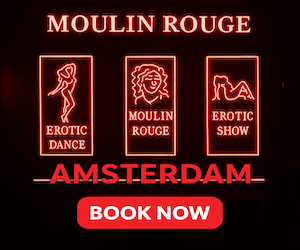What Street Is Amsterdam’s Red Light District? The Ultimate Guide
Posted on: 8 月 1, 2025

What Street Is the Red Light District in Amsterdam? De Wallen Streets, Map & Essential Tips
Editorial standards: This guide is written by licensed local guides, reviewed quarterly, and updated when city rules change. Report issues by contacting us.
What street is the Red Light District in Amsterdam? Confused by myths, crowds, and scams? Learn the exact streets, safe etiquette, and smart routes—fast.
Red Light District Area: De Wallen’s Key Streets & Canals Explained

De Wallen is the historic Red Light District in Amsterdam. It isn’t one single street — it’s a maze of narrow lanes and canals in the city center. Most activity sits east of Dam Square and south of Amsterdam Central Station.
The heart runs along two canals: Oudezijds Voorburgwal and Oudezijds Achterburgwal. You’ll also walk on Warmoesstraat, Zeedijk, and small alleys like Oudekerksplein around the Old Church.
Quick map of key streets
| Area | What you’ll find |
|---|---|
| Oudezijds Voorburgwal | Canals, iconic windows, cafés |
| Oudezijds Achterburgwal | Bridges, bars, red-lit windows |
| Warmoesstraat | Shops, eateries, coffee bars |
| Zeedijk | Historic street, Asian food, small venues |
| Oudekerksplein | Square around the Old Church |
Orientation tips
-
Use the Old Church (Oude Kerk) as your North Star.
-
If you see water and bridges, you’re near Voorburgwal/Achterburgwal.
-
Warmoesstraat runs parallel, one block west of the canals.
Good to know
-
Street names appear on blue signs at corners.
-
Windows are spread out; don’t expect one continuous row.
-
Side alleys connect streets quickly, so distances feel short.
Planning your route through De Wallen? Our interactive map makes it easy. Use Red Light District Directions to find the main canals, nearby landmarks, and the quickest paths from Central Station—so you spend less time lost and more time exploring.
Explain why there’s no single “Red Light Street” and how the district is laid out around canals
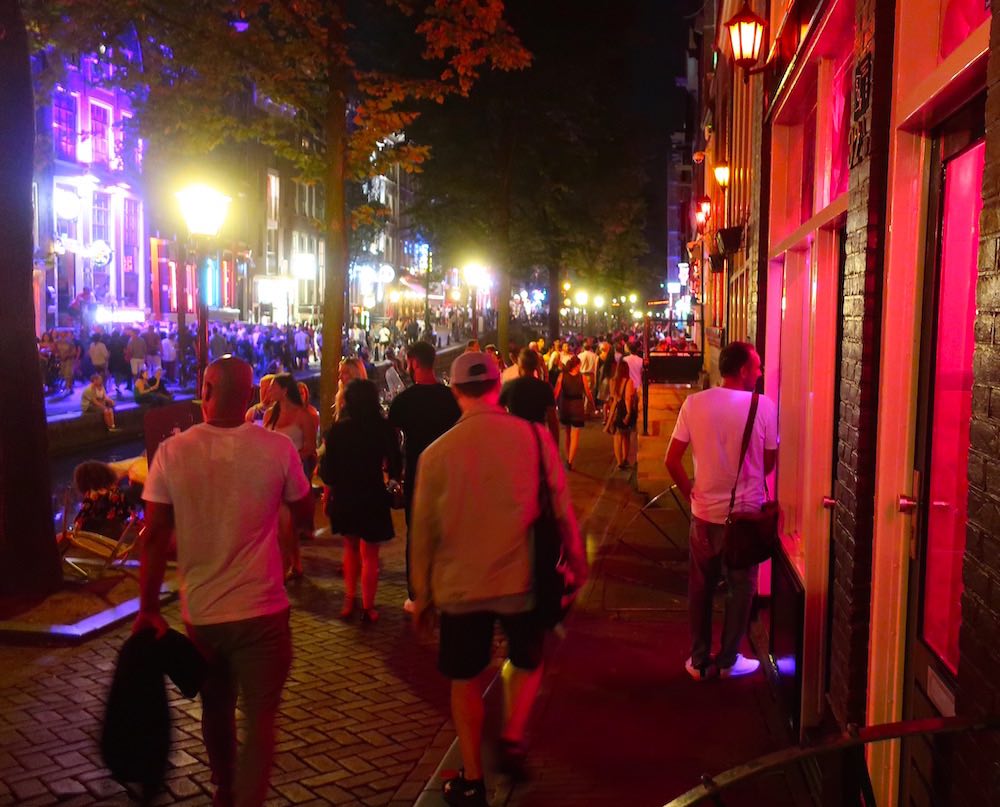
People often ask for the “Red Light Street,” but there isn’t just one. The district grew over centuries around working canals, churches, and markets. That history shaped today’s web of lanes, bridges, and squares.
Windows are grouped in clusters, not a straight line. You might see a few windows, then a café, then more windows on the next bridge. This mix creates a neighborhood feel rather than a single strip.
How the layout works
-
Two canal spines: Voorburgwal & Achterburgwal.
-
Parallel streets: Warmoesstraat and Zeedijk.
-
Connecting alleys: Short cuts that link clusters.
Typical walking loop (30–45 min)
-
Start at Dam Square.
-
Walk to Warmoesstraat.
-
Cross to Oudezijds Voorburgwal.
-
Circle the Old Church (Oudekerksplein).
-
Return via Oudezijds Achterburgwal and Zeedijk.
What this means for visitors
-
You can’t “see it all” from one spot.
-
Expect to turn corners and cross bridges often.
-
Crowds bunch up on bridges; step aside to let people pass.
Looking for an evening show inside De Wallen after mapping the main streets?
Our curated Moulin Rouge Amsterdam review summarize verified visitor feedback on seating, show length, and value for money—so you know exactly what to expect. You’ll find practical tips on booking times, age limits, nearby tram stops, and respectful behavior around the venue.
This helps you plan a safe, realistic itinerary that fits your route through Oudezijds Voorburgwal and Warmoesstraat.
Brief history of the quarter and how window prostitution developed
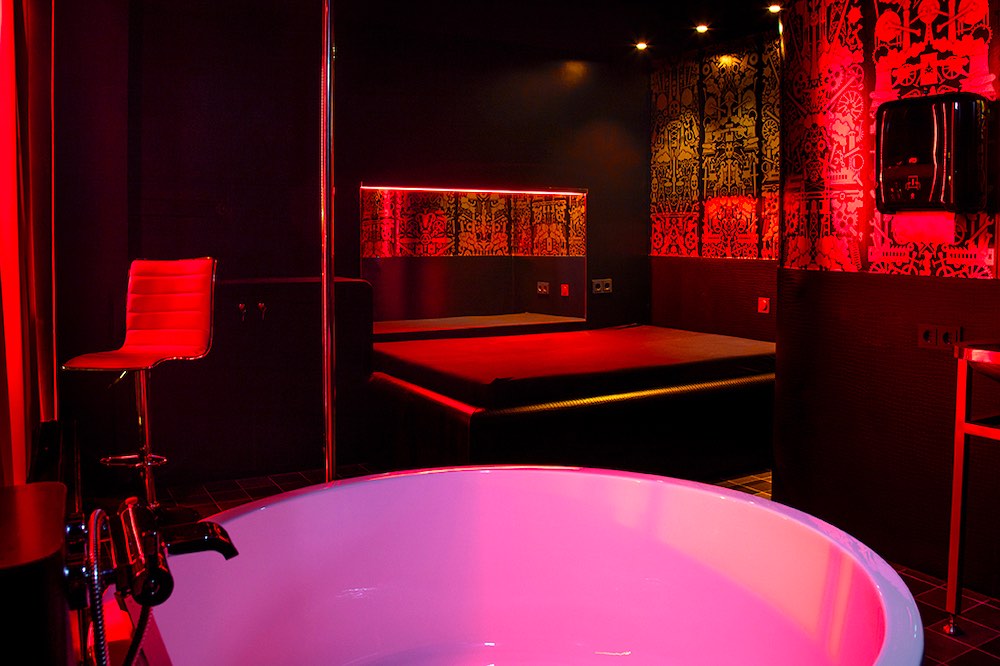
The area dates back to medieval times when sailors and traders filled the port. Inns, breweries, and markets lined the canals. Over time, sex work moved indoors and later into windows.
In the 20th century, Amsterdam shifted toward regulation and harm reduction. Windows concentrated along canal houses, making work more visible — and safer — than street solicitation.
Timeline snapshot
| Period | What changed |
|---|---|
| Middle Ages | Harbor trade, taverns, lodging houses |
| 17th century | Canal expansion, dense housing |
| 20th century | Indoor work becomes common |
| Late 20th–21st | Licensing, health & safety focus |
Why windows?
-
Provide security and control for workers.
-
Clear boundaries between public street and private workspace.
-
Easy for authorities to inspect licensed spaces.
Respect the context
-
The district is both historic and living.
-
Churches, homes, and schools sit nearby.
-
Keep voices down and treat everyone with dignity.
Key landmarks for orientation (Oude Kerk, Dam Square, Nieuwmarkt)

Landmarks help you navigate fast. Dam Square sits to the west; Nieuwmarkt to the east; Amsterdam Central Station to the north. The Oude Kerk (Old Church) stands in the middle like a compass point.
Each landmark anchors a different vibe. Dam Square is open and busy. Nieuwmarkt feels more local with terraces and the Waag. The Old Church area is atmospheric with cobbles and alleys.
Landmarks at a glance
-
Oude Kerk (Old Church): Gothic church, quiet square, photo spot.
-
Dam Square: Royal Palace, National Monument, transit links.
-
Nieuwmarkt: Market square, bars and restaurants, Waag gate.
-
Central Station: Major transit hub, short walk to De Wallen.
Simple walking bearings
-
From Central Station: head south-east to Warmoesstraat.
-
From Dam Square: go east along Damstraat into the district.
-
From Nieuwmarkt: walk west over the canals toward the Old Church.
Mini tip list
-
Use church bells as an audio cue.
-
Bridges = good viewpoints.
-
At night, follow lit bridges to avoid detours.
Getting there and navigating (from Centraal Station, best routes, walking tips)
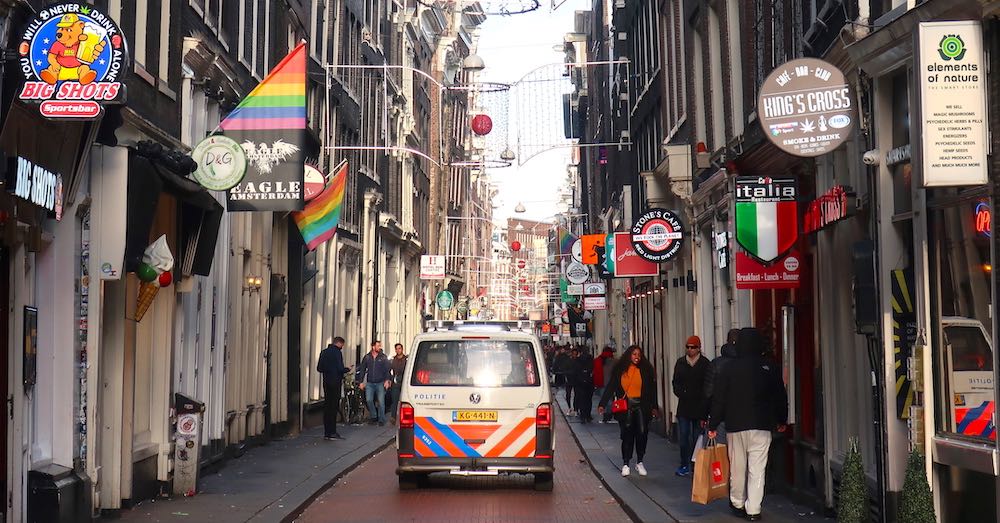
From Amsterdam Central Station, the district is a 5–10 minute walk. Follow the flow down Damrak, then cut left to Warmoesstraat. Or take the quieter route via Zeedijk for food and side streets.
Trams and metros also drop you close. The Nieuwmarkt metro stop lands you on the east side. From Dam Square, it’s an easy stroll into Warmoesstraat and the canals.
Quick access table
| Starting point | Route | Time |
|---|---|---|
| Central Station | Damrak → Warmoesstraat | 5–10 min |
| Dam Square | Damstraat → Oudezijds Voorburgwal | 5–8 min |
| Nieuwmarkt | Cross canal → Oudekerksplein | 4–6 min |
Navigation tips
-
Wear flat shoes; cobbles and bridges can be slippery.
-
Keep wallets in front pockets or zipped bags.
-
Avoid blocking alleys; step aside to check maps.
Crowd-smart moves
-
Visit earlier in the evening for smoother walking.
-
Use parallel streets (Warmoesstraat/Zeedijk) to bypass bottlenecks.
-
Take a canal loop instead of pushing through a dense crowd.
Rules, etiquette, and respect (no photos, behavior, tipping, language notes)

Photography of windows is not allowed. This protects privacy and safety. Security may intervene if you take photos or videos of workers. Keep your phone down near windows and avoid pointing cameras toward them.
Be polite and quiet. Treat workers like professionals. If you discuss services, be respectful and clear. If you’re not interested, just say “no, thank you” and walk on.
Do / Don’t checklist
-
Do: respect “no photos,” keep voices low, form a line if needed.
-
Don’t: touch windows, knock or shout, haggle aggressively, block doors.
Money & tipping
-
Many places prefer cash.
-
ATMs exist but can be busy; avoid using them in crowds.
-
Tipping is appreciated in bars and on tours, not required for everything.
Language basics
-
English is widely spoken.
-
Simple Dutch greetings go a long way: “Hallo,” “Dank je.”
-
If unsure, ask politely and follow instructions.
Safety and responsible tourism (pickpockets, scams, how to be a good visitor)
The area is lively and generally safe, but crowds attract pickpockets. Keep bags closed and phones secure. Stay aware on bridges where people bunch up.
Avoid street drugs and unlicensed offers. Use official venues, licensed windows, and reputable bars. Stick to lit streets and stay with friends at night.
Safety quick tips
-
Carry only what you need.
-
Use contactless payment where possible.
-
If something feels off, walk into a busy café or call for help.
Responsible visitor habits
-
Lower your voice near homes and churches.
-
Bin your trash; canals and alleys are not bins.
-
Support local businesses that follow the rules.
If you need help
-
Look for police posts around busy areas.
-
Many venues can call assistance.
-
For medical issues, seek official clinics or hospitals.
Recent changes and future plans affecting the area (relocations, policy shifts, nightlife trends)
City policies evolve to balance residents’ needs with tourism. That can mean changes to window locations, hours, and rules. You might notice more signs about behavior and photography than before.
There are ongoing discussions about moving some activities or spreading nightlife. The goal is to reduce nuisance and keep the area safe and livable. Details can shift, especially during peak seasons and events.
What visitors may notice
-
Stricter signage and patrols on busy nights.
-
Possible crowd-control on popular bridges.
-
Clearer rules at venue entrances.
Stay updated before you go
-
Check the City of Amsterdam website for visitor notices.
-
Book guided tours that follow the latest rules.
-
Ask your hotel or guide for current advice.
Bottom line
-
The Red Light District is dynamic.
-
Respect signs, follow staff directions, and you’ll be fine.
-
Flexibility makes your visit easier and more enjoyable.
Quick FAQ (bonus)
-
Is there one “Red Light Street”? No, it’s a district (De Wallen) with several streets and canals.
-
Where should I start? Dam Square or Central Station are easy starting points.
-
Can I take photos? Never of windows or workers. Respect signs and privacy.
Amsterdam Red Light District: Top FAQs (Quick Answers)
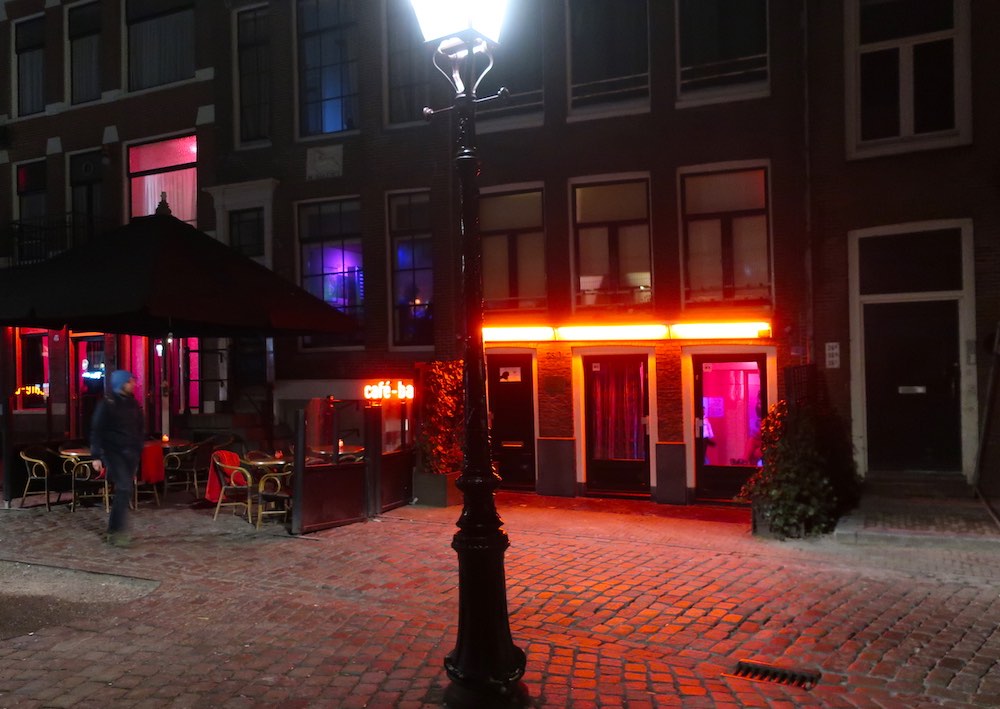
-
What street is the Red Light District in Amsterdam?
The Red Light District isn’t one street. It’s De Wallen, centered on Oudezijds Voorburgwal, Oudezijds Achterburgwal, Warmoesstraat, and Zeedijk. -
What is the exact name of the area?
It’s called De Wallen (Old City Center), a network of canals and narrow lanes near Dam Square and Central Station. -
How do I get there from Amsterdam Central Station?
Walk 5–10 minutes via Damrak → Warmoesstraat or take the quieter Zeedijk route. Both lead straight into De Wallen. -
Is there a map of the Red Light District streets?
Yes. Search “De Wallen map” or use any maps app and pin Oude Kerk (Oudekerksplein) as your central landmark. -
What are the rules about photos?
No photos or videos of workers or windows. It’s strictly enforced. Keep phones down near windows. -
Is the Red Light District safe to visit?
Generally yes, but it’s crowded. Watch for pickpockets, avoid street dealers, and stick to well-lit main streets. -
When is the best time to visit?
Early evening or weekday afternoons are less crowded. Late nights and weekends are busiest. -
Is prostitution legal in Amsterdam?
Yes. Sex work is legal and regulated. Windows operate with licenses and regular inspections. -
Can families or solo travelers visit?
Yes, it’s a public neighborhood. Be respectful, avoid explicit venues with kids, and follow local etiquette. -
What landmarks help me navigate?
Use the Oude Kerk (Old Church) as your anchor. Nearby are Dam Square (west) and Nieuwmarkt (east).
Disclaimer: Regulations and opening hours can change. Check official city notices before visiting.
